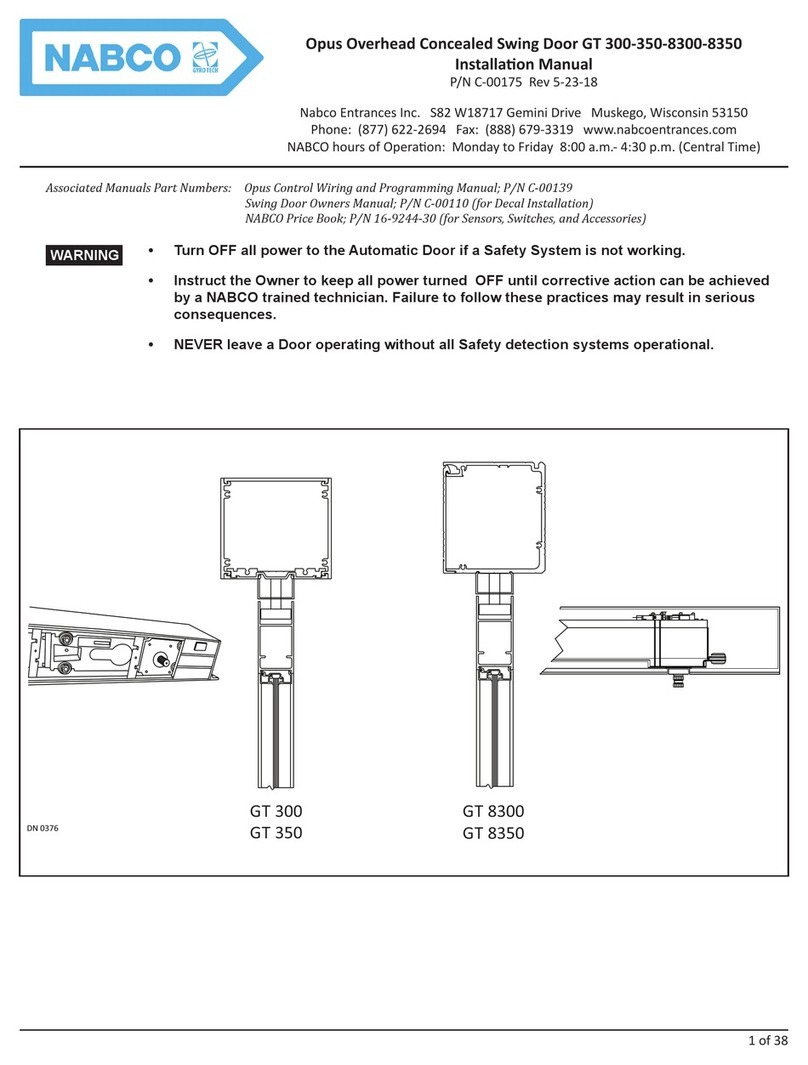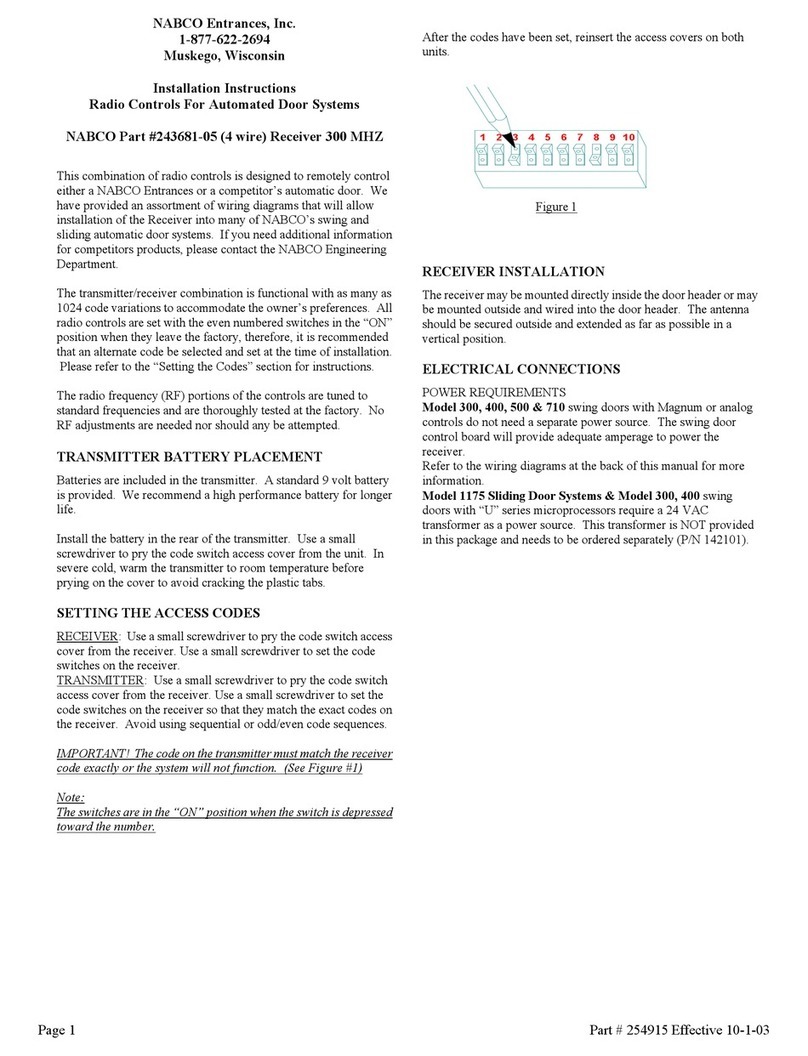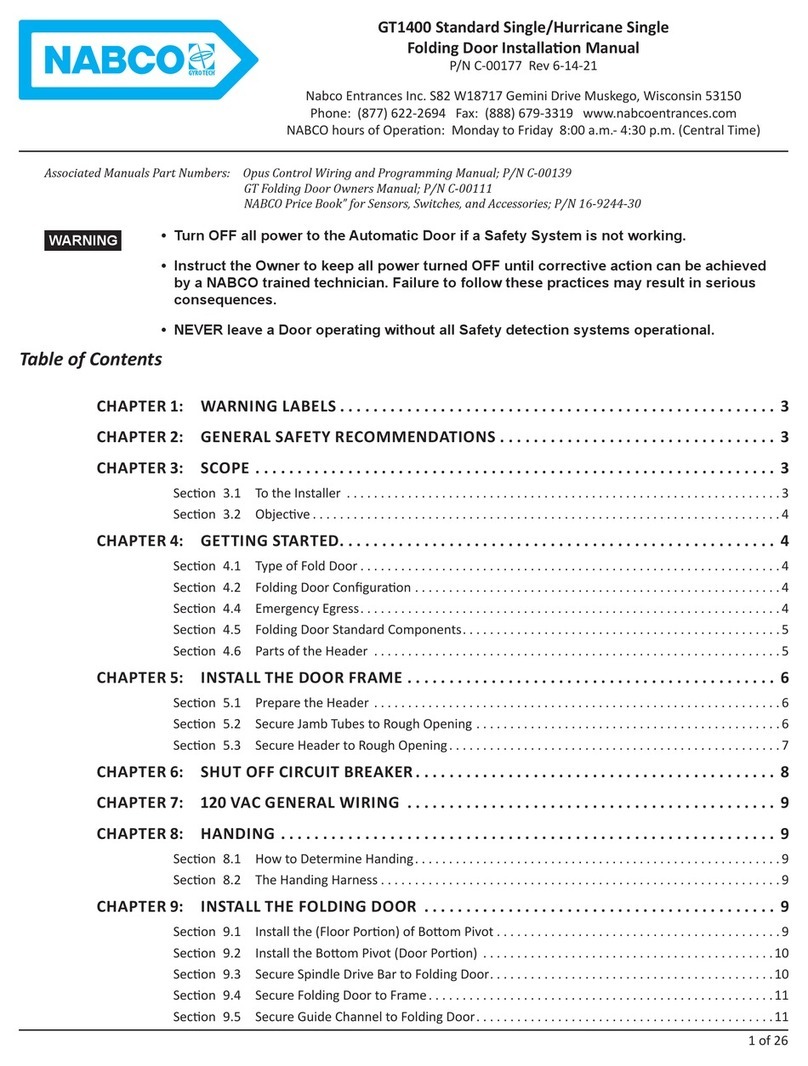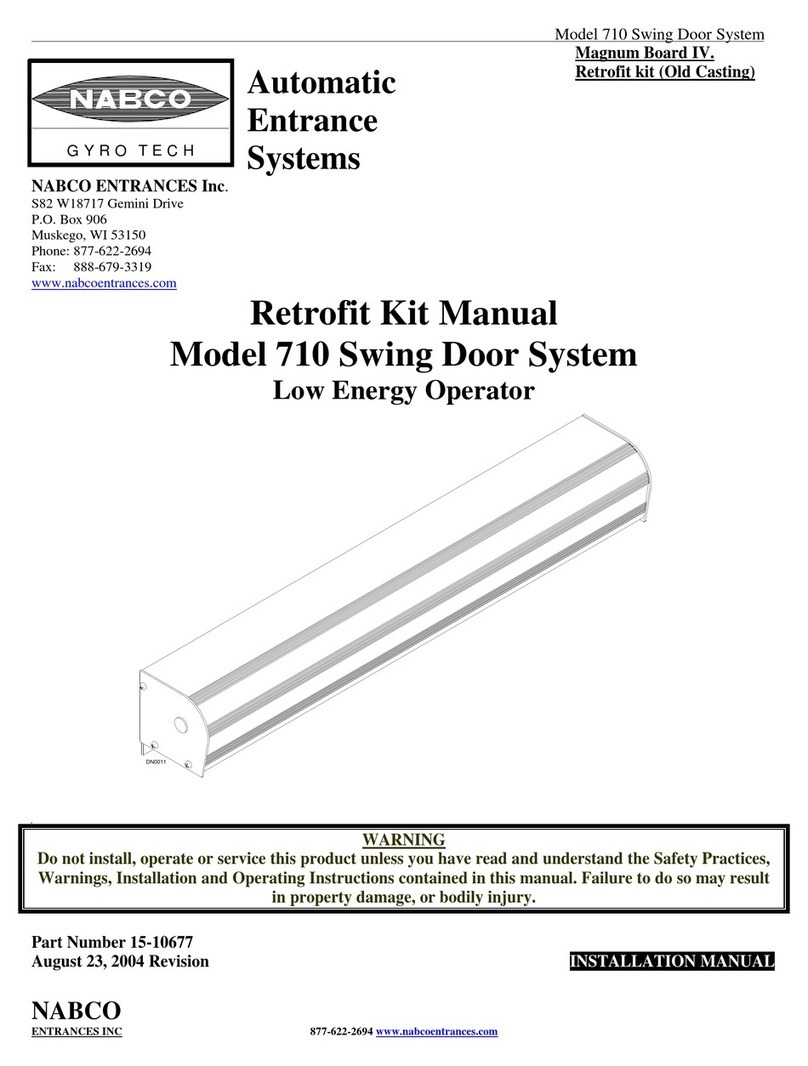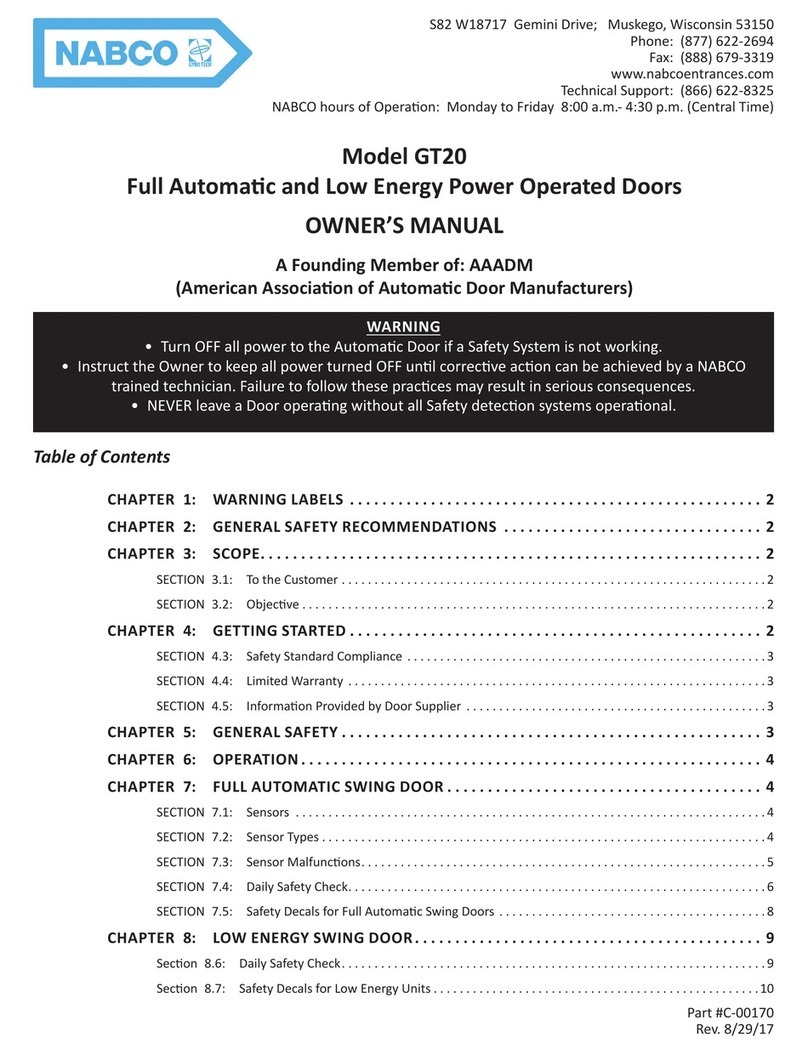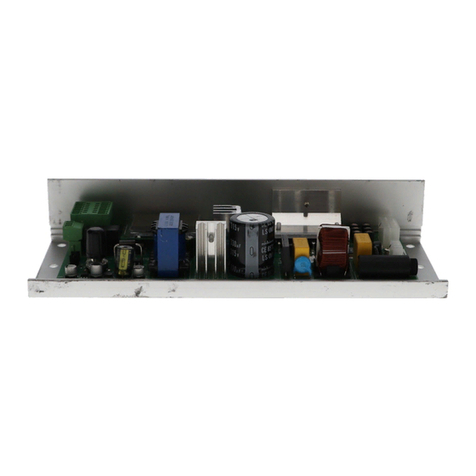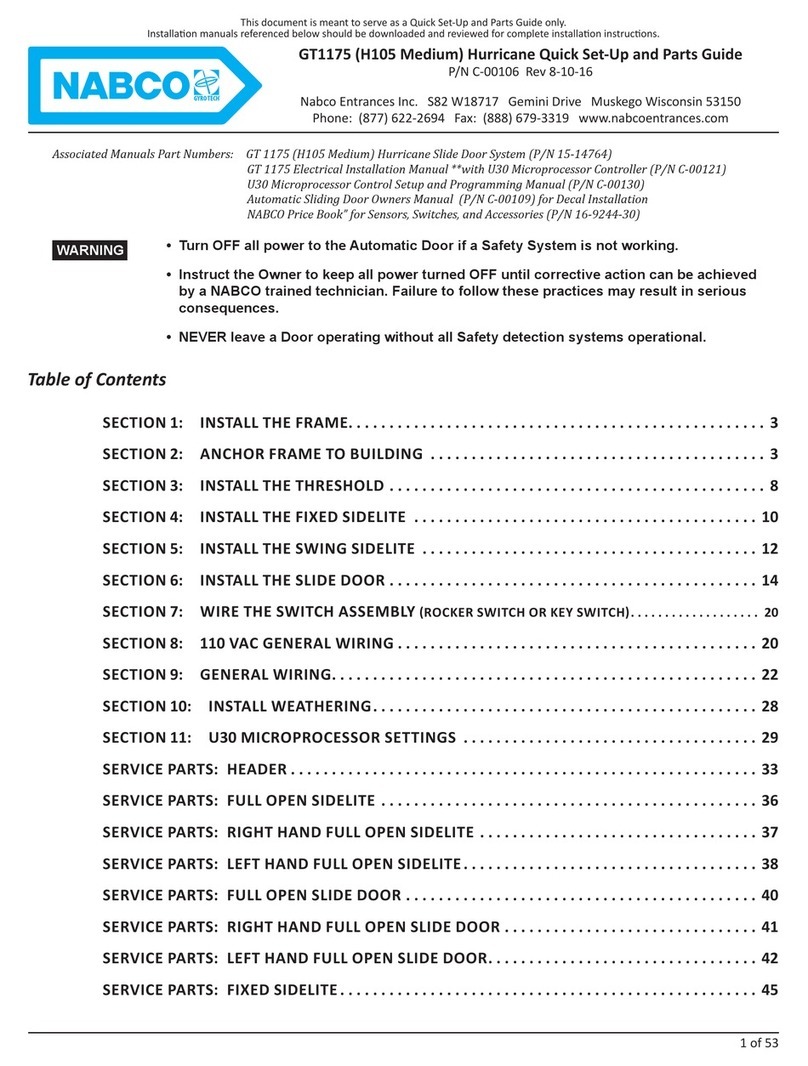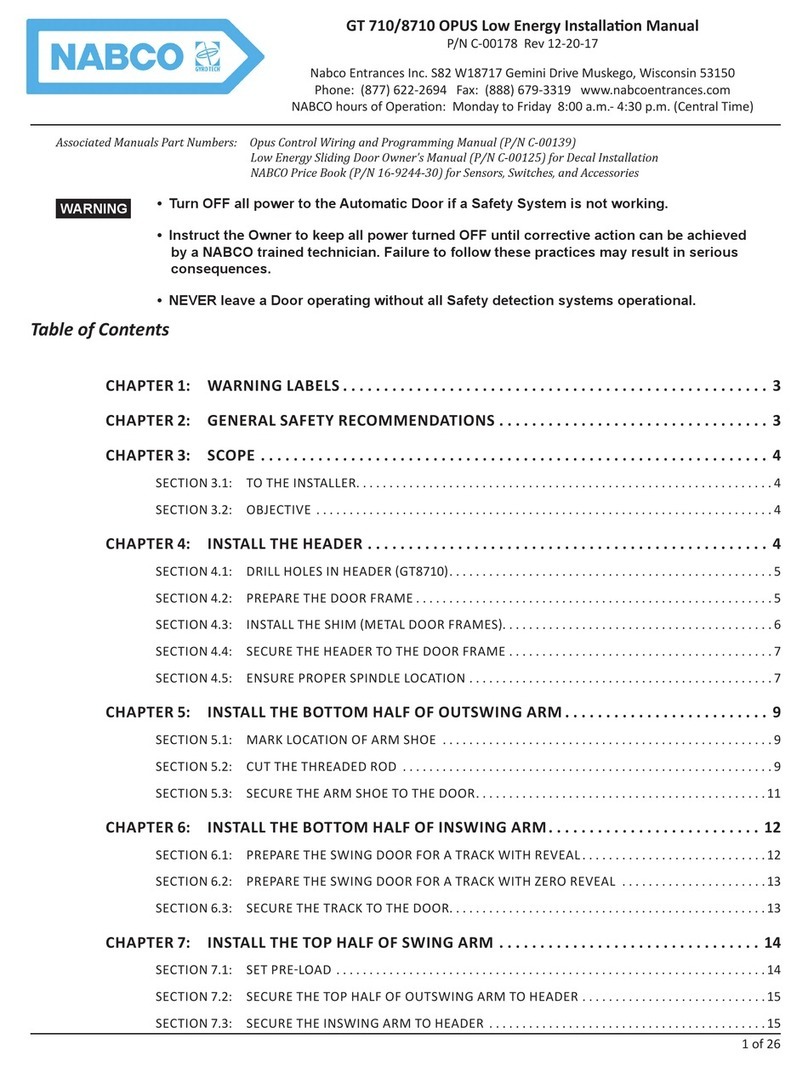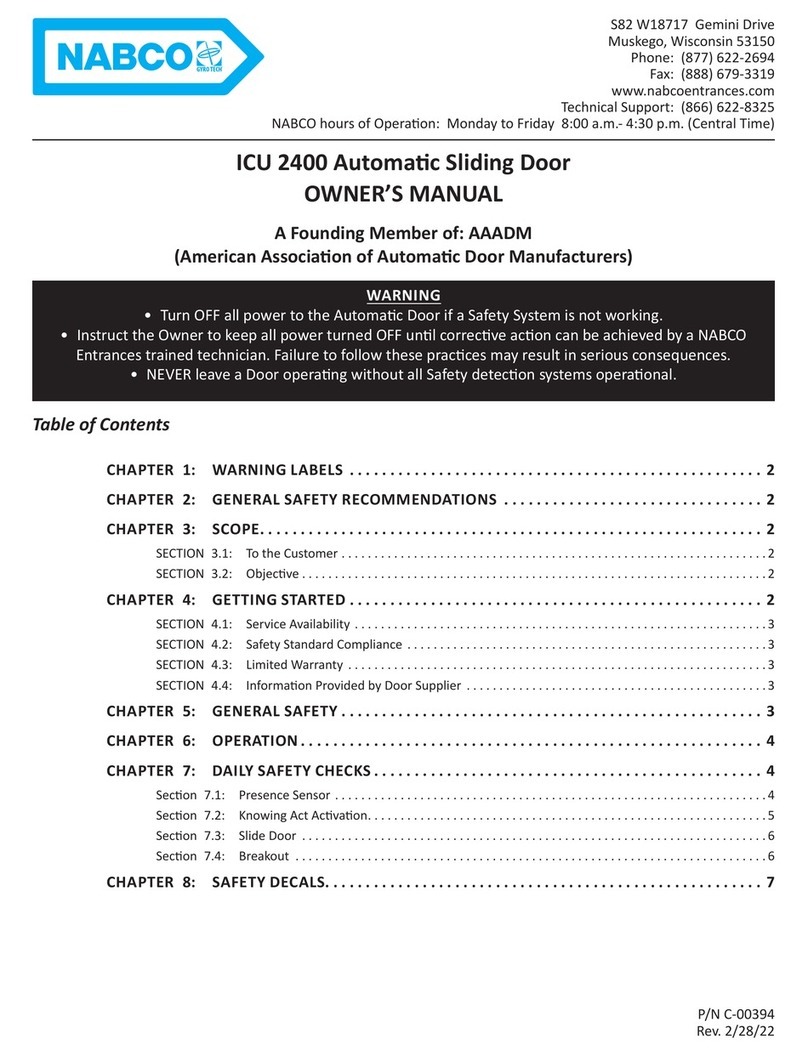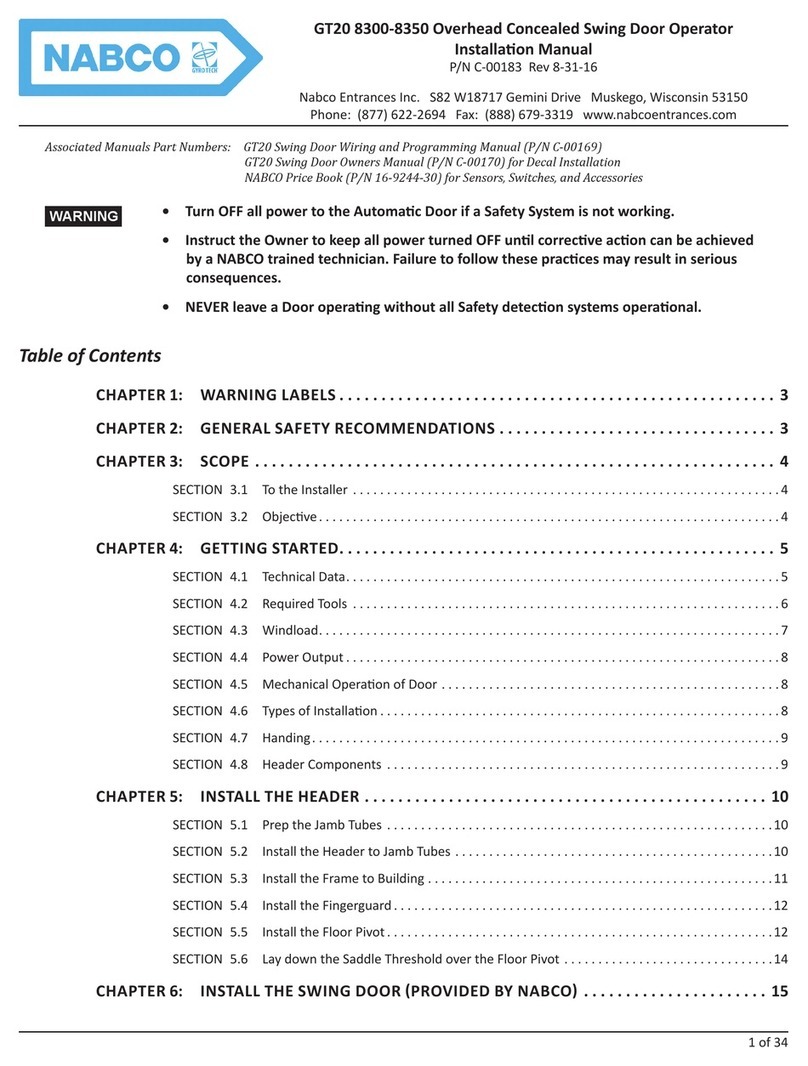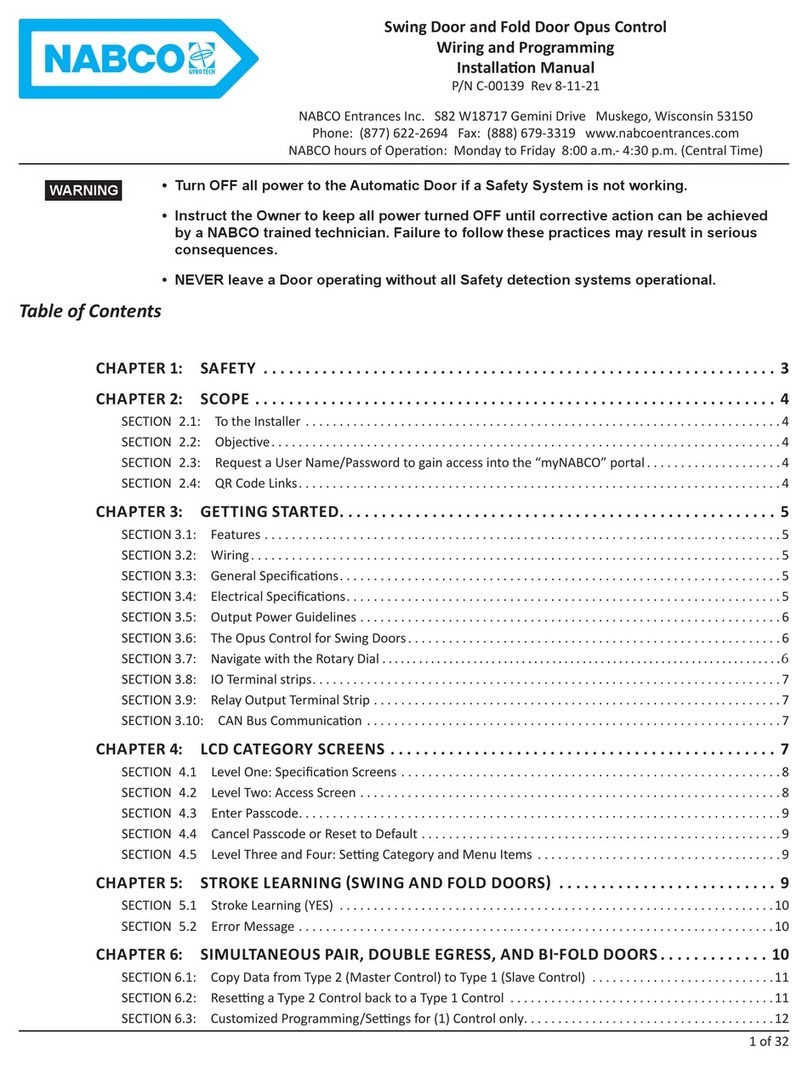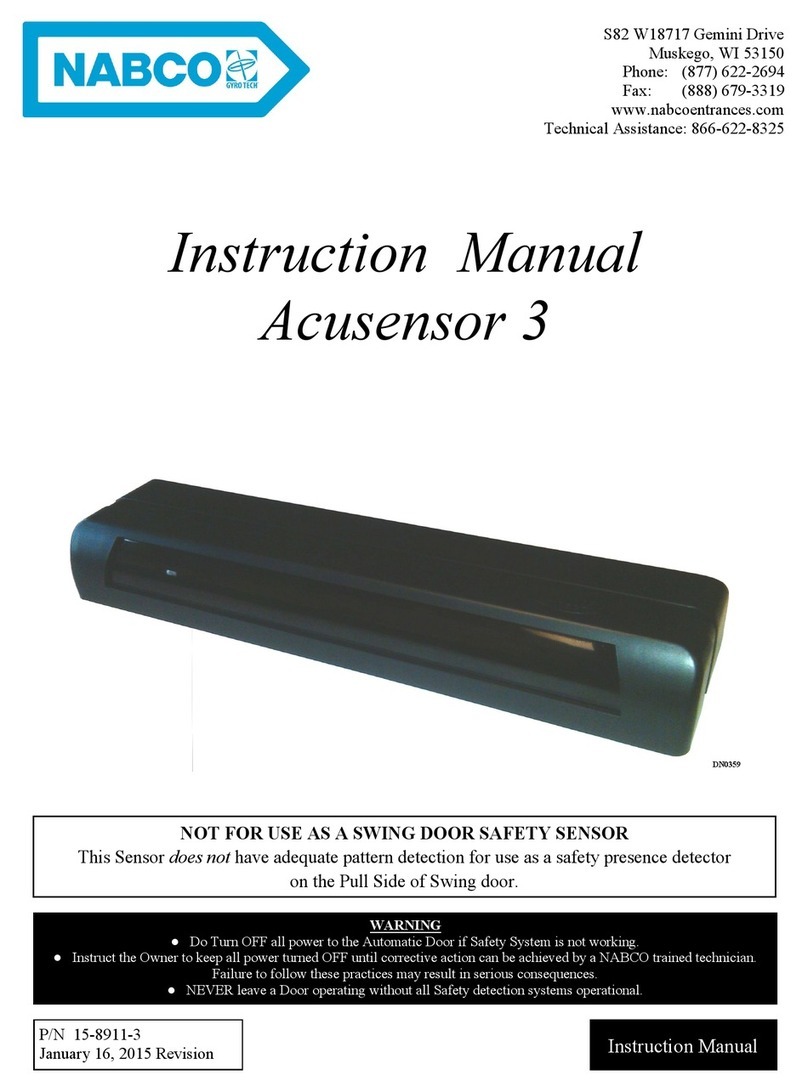
3 of 31
www.NabcoEntrances.com GT1175 Slide Door Opus Control Wiring and Programming Manual
Rev. 8-11-21 P/N C-00391
CHAPTER 1: SAFETY
SECTION 1.1: Warning Labels
Warning labels are universal and used to alert an individual of potenal harm to one’s self or to others. The following warning labels
are listed in a hierarchy order that denes the most potenal danger rst, and the least potenal danger last.
Indicates potentially dangerous situations. Danger is used when there is a hazardous situation
where there is a high probability of severe injury or death. It should not be considered for
property damage unless personal injury risk is present.
Indicates a hazardous situation which has some probability of severe injury. It should not be
considered for property damage unless personal injury risk is present.
Indicates a hazardous situation which may result in a minor injury. Caution should not be
used when there is a possibility of serious injury. Caution should not be considered for
property damage accidents unless a personal injury risk is present.
Aenon: A situaon where material could be damaged or the funcon impaired.
Notice: Indicates a statement of company policy as the message relates to the personal safety or protecon of
property. Noce should not be used when there is a hazardous situaon or personal risk.
Note: Indicates important informaon that provides further instrucon.
SECTION 1.2: General Safety Recommendaons
Disconnect all power to the junction box prior to making any electrical connections. Failure to
do so may result in serious personal or fatal injury. When uncertain whether power supply is
disconnected, always verify using a voltmeter.
Do not place nger or uninsulated tools inside the electrical controller. Touching wires or
other parts inside the enclosure may cause electrical shock, serious injury or death.
Read, study and understand the installation and operating instructions contained in or
referenced in this manual before operating. If you do not understand the instruction, ask a
qualied technician. Failure to do so may result in bodily injury or property damage and will
nullify all warranties.
The Ground wire from the Opus Control 120 VAC Harness, and the Incoming 120 VAC Ground
wire must be connected to the Ground screw located within the Swing door Header.
All electrical troubleshooting or service must be performed by trained, qualied electrical
technicians and comply with all applicable governing agency codes.
Do Not touch other parts of the Opus Control board with a screwdriver or anything else metal.
Damage to electrical circuitry may occur.
If the door appears broken or does not seem to work correctly, it should be immediately
removed from service until repairs can be carried out or a qualied service technician is
contacted for corrective action.
Notice: This manual, the owner’s manual and all other associated manuals must be given to and retained
by the purchasing facility or end user.
Notice: Wiring must meet all local, state, federal or other governing agency codes.
